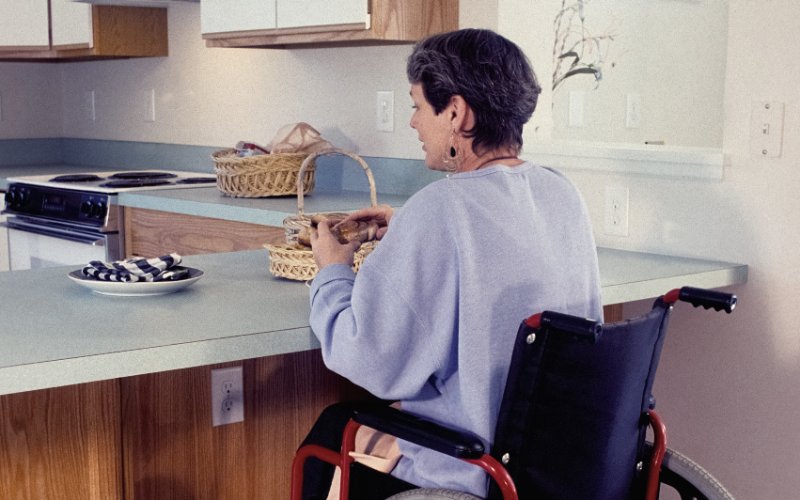Rolling over your superannuation balance into your SMSF can be a good way to make the most of your super funds. You can choose to roll over your entire balance, or just a portion of it - it's totally up to you. Either way, you get to decide how to best manage your future retirement funds.
Reasons to switch from an industry or retail super fund to an SMSF
First up, if you're still deciding whether to make the switch from an APRA (industry or retail) super fund to an SMSF, there are several pros and cons to consider. Choosing a SMSF depends on your own circumstances but there are some key benefits.
You're in control
When you manage your own SMSF, you are completely in control of your investment choices. This is in contrast to a retail or industry super fund, where the contributions you make are invested by experts employed by or attached to the fund.
You can choose to invest as aggressively or conservatively, or as broadly or narrowly as you'd like. Whether you choose to invest in shares, cash, bonds, or property, the choice is entirely yours.
Tax benefits
There are also potential tax benefits to running an SMSF. The minimum tax rate on SMSF contributions is 30% and if you choose to make personal concessional contributions (which we will touch on later), you'll be taxed at only 15%. Additionally, capital gains tax is only 10% on assets held for longer than 12 months while earnings in the pension phase are not taxable.
It's strongly advised to always seek professional advice when it comes to tax time and refer to the Australian Taxation Office (ATO) for tax law guidelines and updates before claiming deductions.
Rolling over your full super balance to an SMSF
If you want to roll over - or consolidate - your super balance to your SMSF, the process of doing so is quite straightforward. There are a few steps involved to get the process started and once you've done your part, it's in the hands of others.
1. Ensure your SMSF is ready to go
Firstly, you'll need to make sure your SMSF is ready to accept super contributions. This means you'll need to ensure that the fund is fully set up and registered with the ATO, and all the details are accurate and up to date. If your SMSF isn't ready to roll(over), your existing super fund won't be able to complete your transfer.
The ATO has a list of requirements you'll need to have in place before rollovers can successfully take place. One of these is the appointment of an SMSF messaging service provider who can provide an electronic service address (ESA) for your fund. You will need this for processing rollovers, contributions, and release authorities. Once you receive an ESA, you'll also need to provide the address to the ATO. You can do this via the ATO's online services or through your tax agent.
2. Confirm that you're a member of an SMSF
Once you've made sure your SMSF is compliant and ready to receive rollovers, the super fund you're rolling over from will need to confirm that you're a member of your SMSF. You can check your membership by checking the ATO Online personal details page. If there have been any changes to the members of your SMSF, you'll need to notify the ATO.
3. Complete your rollover request
Before putting in your request, check with your existing fund that the details they hold for you are an exact match with the details on your SMSF. For example, if your old fund is under a maiden name or uses a shortening such as Sue for Susan, it won't go through. Also check what proof of information documents or other information you may need to provide, such as a marriage certificate or SMSF bank details.
It's also worth checking whether your existing fund has a daily transaction limit. You may need to do the transaction in a number of payments. Your fund will be able to give you this information.
Once you have your ducks lined up, there are several ways to request a rollover from an APRA-regulated fund. These include:
-
going directly to your existing fund and completing their requisite forms - whole of balance or partial transfers can be done this way
-
using the ATO's online services - note: only whole of balance transfers can be made this way
-
use your SMSF messaging provider to issue a rollover initiation request to the APRA-regulated fund
4. Your super fund does the rest
Once you've made the request, your existing fund must transfer the requested amount, or your entire balance, into your SMSF. This will generally take three business days after your industry or retail fund has received all the required information. Transfers may take longer if:
-
the fund's underlying assets are illiquid
-
the superannuation product is a closed or defined benefit product
-
the pension account is a type other than an account-based pension
It's worth noting APRA-regulated funds are also required to run mandatory verification checks before any transfer can take place. As a protection against potential fraud, you will receive emails or text message alerts that the request has been made. Of course, if you haven't made a request, you need to contact the transferring fund immediately. Your existing fund is also required to report any suspected illegal activity to the Australian Transaction Reports and Analysis Centre (AUSTRAC).
5. Confirm your SMSF has received the rollover
When your SMSF receives payment and the associated data that comes with it, you are required to make sure the payment reference number (PRN) in the data message matches the number provided with the payment. You must confirm receipt of the rollover by sending a response message through your SMSF messaging provider to the APRA-regulated fund within three business days.
Partial super rollover: Why or why not?
If you have an SMSF as well as an APRA regulated super fund, you might be considering keeping both accounts active and only rolling over a portion of your super balance. There are a few reasons why this can be a suitable or a not-so-suitable idea. Again, it will come down to your own personal circumstances and preferences.
Keeping your APRA super fund can be good idea if you want to keep your fund's insurance premiums active as the costs can sometimes be cheaper through an industry or retail fund than through an SMSF. Plus, it saves the hassle of having to research and source new insurance and set it up inside or outside your SMSF. Bear in mind though, the insurance through your fund may not always be cheaper so it could be helpful to get some quotes to double check whether you're better off keeping the policies through your existing fund or not.
In addition, keeping some of your balance in an APRA fund can be a more convenient way to invest in 'liquid' assets, such as shares, while an SMSF can be more beneficial for 'illiquid' assets such as property.
There can also sometimes be a fee for withdrawing from your APRA super fund, so you should look into how much this will cost - and continue to cost over the longer term. Don't forget, if you keep both funds running, you'll be paying two sets of fees to keep your superannuation accounts open and active, which could add up in the long run.
Making other contributions to an SMSF
In addition to a rollover, there are other ways to get the balance of your SMSF off the ground so that you can start investing.
Employer contributions
You can elect for your employer to make contributions to your SMSF just as they would with your previous super fund. In this scenario, your employer would deposit your funds into your SMSF bank account, rather than to your super fund account. You can then invest this money how you wish, complying with ATO tax laws of course. Currently, the compulsory employer contribution rate is 11%, meaning 11% of your salary or wage would go directly into your SMSF.
For your employer to pay your super contributions into your SMSF, they will need:
-
Your SMSF's ABN
-
Your SMSF's BSB and account number for making payments
-
Your funds' ESA for contribution data
Your employer will need to use SuperStream, the required method for businesses to pay superannuation guarantee contributions to super funds, including to SMSFs.
If they don't get ahold of this information from you, they will continue to make compulsory payments into your previous super account, or an account nominated on your behalf. Once they receive all of the relevant information, they can start paying into your SMSF.
Personal contributions
As mentioned earlier, you can choose to make personal contributions to your SMSF. There are two types of personal contributions you could make: concessional (pre-tax) or non-concessional (after tax).
If you decide to make concessional contributions, they are taxed at a lower rate of 15%. This is compared to the potential taxation rate of up to 45% (depending on your income and the tax bracket you fall into). However, concessional contributions are capped at $30,000 per year from 1 July 2024. (Note: this is up from $27,500 for the 2020-21, 2022-23, and 2023-24 financial years.) Be aware, concessional contribution totals also include super contributions from an employer and salary sacrificing.
You can make further non-concessional contributions although you won't be able to claim any income tax deduction for them. These are the most common type of non-concessional contributions, but they are also capped. From 1 July 2024, the non-concessional contributions cap is $120,000. However, if you're over 75 years of age, you may be able to make non-concessional contributions up to three times the annual cap in a single year.
If you are under 75 years old, you may be able to access what's called a 'bring-forward arrangement' which allows you to make contributions up to a higher cap amount over a number of years. These contributions will depend on the balance in your super fund as at 30 June of the prior financial year. From 1 July 2024, for SMSFs with less than $1.66 million, you can make non-concessional contributions up to $360,000 over three years. Both the caps and the years lower as the amount in the fund increases.
Looking to take control of your retirement? This table below features SMSF loans with some of the most competitive interest rates on the market.
| Lender | Home Loan | Interest Rate | Comparison Rate* | Monthly Repayment | Repayment type | Rate Type | Offset | Redraw | Ongoing Fees | Upfront Fees | LVR | Lump Sum Repayment | Additional Repayments | Split Loan Option | Tags | Features | Link | Compare |
|---|---|---|---|---|---|---|---|---|---|---|---|---|---|---|---|---|---|---|
6.99% p.a. | 7.00% p.a. | $2,659 | Principal & Interest | Variable | $0 | $230 | 70% | Featured |
| |||||||||
7.24% p.a. | 7.25% p.a. | $2,726 | Principal & Interest | Variable | $0 | $0 | 70% | |||||||||||
7.39% p.a. | 7.47% p.a. | $2,767 | Principal & Interest | Variable | $0 | $995 | 80% | |||||||||||
7.55% p.a. | 7.94% p.a. | $2,811 | Principal & Interest | Variable | $395 | $1,920 | 80% | |||||||||||
7.79% p.a. | 8.58% p.a. | $2,877 | Principal & Interest | Variable | $395 | $1,185 | 85% |
Image by Nathan Dumlao on Unsplash








 Rachel Horan
Rachel Horan






